Painting a chain link fence enhances its aesthetic appeal and protects against rust and corrosion. This guide provides step-by-step instructions, covering materials, preparation, painting, and aftercare. With the right approach and patience, transform your old fence into a visually pleasing and long-lasting property boundary.
Assess the Condition of Your Chain Link Fence
Before you begin the painting process, it is essential to conduct a thorough inspection of the condition of the mesh fence. If you come across severe rust, it is important to note that a simple coat of paint may not be sufficient; you may need to consider replacing certain parts to restore the fence’s integrity.
In addition to identifying any issues, it is crucial to remove any loose material and make sure the hedge is carefully removed. Eliminating dirt, grease, and loose paint will create a clean surface that allows the new paint to adhere properly. This meticulous assessment and preparation are vital for the success and longevity of your painting project.
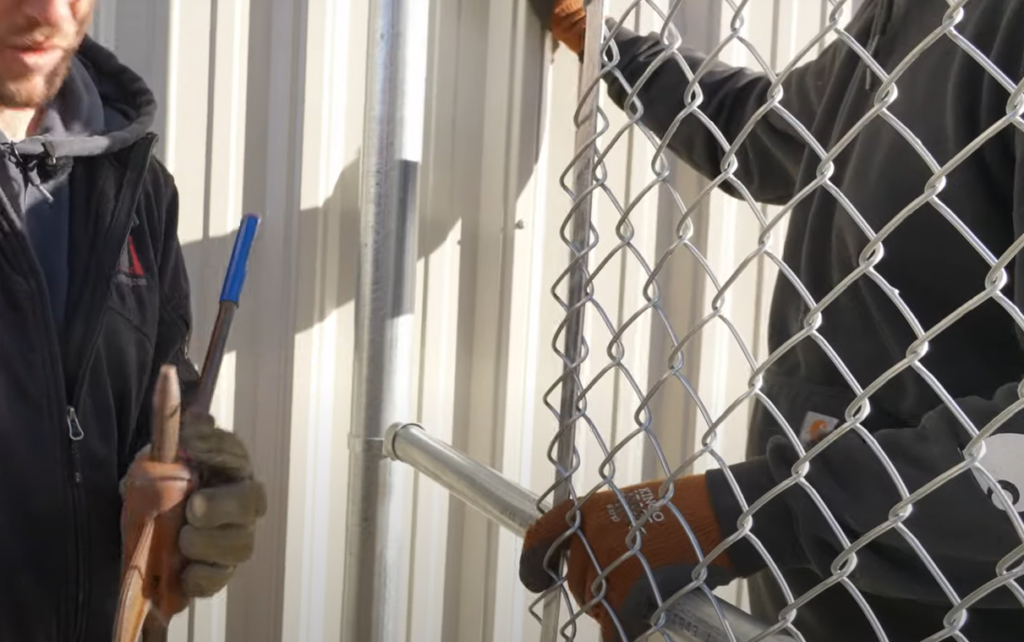
By addressing potential issues before they escalate, you can avoid future complications and maintain the overall quality of your recently colored chain link barrier. So take the time to conduct a comprehensive evaluation, and once you’ve completed this essential step, you can proceed confidently with your painting endeavor.[1]
Repair Your Chain Link Fence
Before you can apply paint to your fence, it is important to thoroughly assess and address any damages or problems that may be present. Take the time to carefully inspect the entire fence, paying close attention to areas that may require repair.
Start by tightening any loose bolts or fasteners to ensure that the fence is structurally sound. If you come across any parts that are worn out or damaged beyond repair, it is best to replace them before proceeding. This will ensure that the fence can effectively serve its purpose and withstand the test of time.
For areas of the fence that are affected by rust, it is recommended to use a wire brush to scrape away as much rust as possible. This will help to create a clean surface for painting and prevent any further deterioration. In cases where the rust is extensive, you may want to consider using a rust converter. This product not only halts the rusting process but also creates a paintable surface, ensuring a sleek and durable coating.
Remember, a well-maintained and repaired fence will not only look better when painted but will also have a longer lifespan. By taking the time to address any damages or problems before painting, you are ensuring that your fence will remain in good condition for years to come.
Always put security first when working with fencing. Use gloves and protective goggles when handling potentially sharp parts or when using rust converters. This will help to prevent any accidents or injuries and ensure a smooth and hassle-free painting process.[1]
How to Prep a Galvanized Chain Link Fence for Paint
Before embarking on the painting process, it is crucial to emphasize the significance of proper preparation for your galvanized chain link fence. This meticulous preparation ensures a solid and reliable coating that is not only durable but also a professional result that will stand the test of time.
To start, dedicate ample time and attention to thoroughly cleaning the fence. Begin by creating a solution using warm water and trisodium phosphate (TSP), which is readily available at most home improvement stores. Gently apply the solution to the fence using a soft-bristled brush, ensuring every nook and cranny is reached. With diligence, remove all traces of dirt, grease, and grime that may have accumulated over time. Once the cleaning process is complete, rinse the fence generously with fresh water, leaving no residue behind. Patience is key as you allow the fence to dry completely.
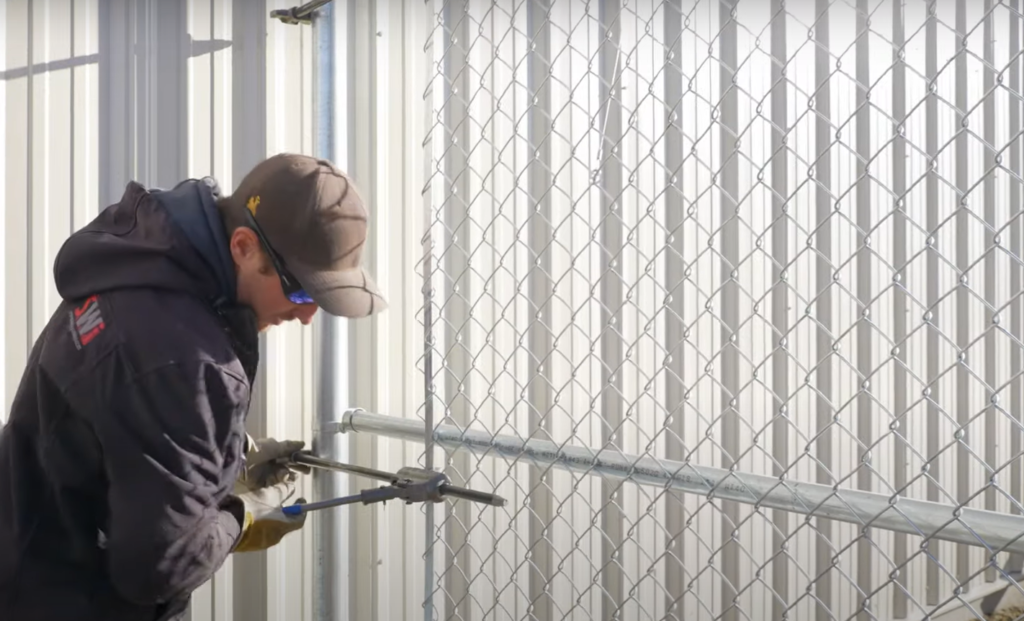
Moving forward, it is essential to etch the galvanized surface to guarantee the paint’s optimal adhesion. Prepare a simple solution of vinegar and water, mixing them in a 1:1 ratio. Carefully apply this solution to the fence using a sponge or sprayer, ensuring even coverage across the entire surface.
Once the designated time has passed, thoroughly rinse off the vinegar solution and allow the fence to dry completely once again. Ensuring the surface is impeccably dry is vital before proceeding to the next step, which involves applying the primer.By giving due diligence to the preparation process, you guarantee maximum adhesion and durability of the paint on your galvanized chain link fence. This meticulous attention to detail is especially crucial when considering the fence’s exposure to various outdoor elements. Rest assured that by following these comprehensive preparation steps, your fence will not only look professional but will also withstand the test of time.[1]
How to Prep the Area Around a Chain Link Fence Before Painting
Before starting the painting project, it is absolutely crucial to thoroughly prepare the area surrounding your chain link fence. Begin by meticulously removing any potential obstacles that may impede your movement or risk getting splattered with paint. Take extra care to clear away any garden tools, equipment, or outdoor furniture that could hinder your progress.
For any plants or grass in close proximity to the fence, it is highly recommended to cover them diligently with drop cloths or plastic sheets. This will provide a protective barrier against any potential paint drips or spills that may occur during the painting process. Additionally, consider utilizing painter’s tape to carefully cover and safeguard any areas where the fence meets other structures, such as your house or shed. This thoughtful attention to detail will ensure that these structures remain unblemished.
Moreover, if your fence happens to be situated near a concrete or paved surface, it is advisable to employ a drop cloth or cardboard to prevent any unsightly and unwanted paint stains from marring these areas. By taking this extra precautionary step, you can rest assured that both your fence and its adjacent surroundings will be safeguarded from any inadvertent paint damage.
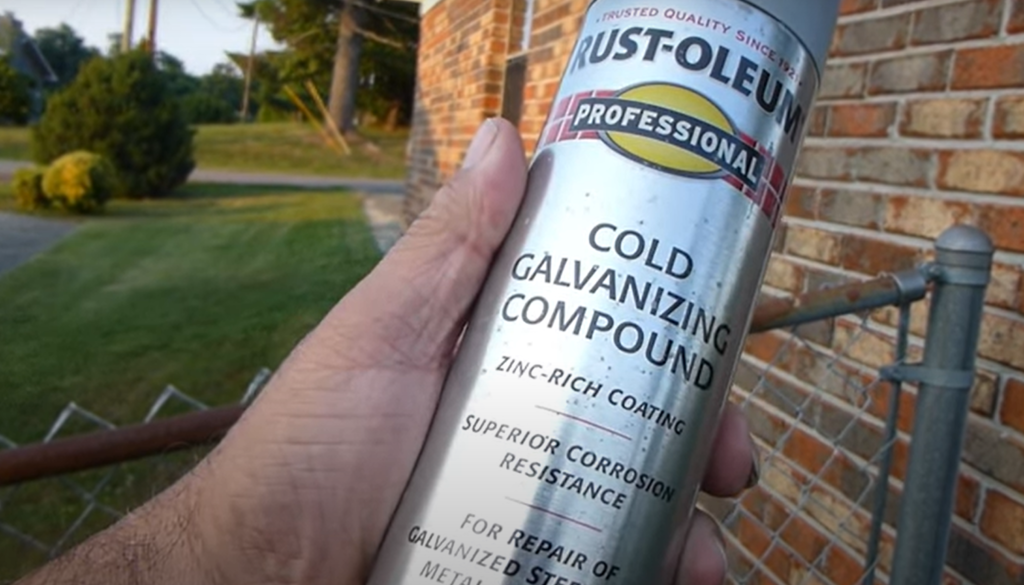
By diligently following this comprehensive preparatory process, you will be setting the stage for a smooth and hassle-free painting experience. Not only will this meticulous preparation facilitate the painting process itself, but it will also help maintain the cleanliness and integrity of the surrounding area, leaving you with a pristine and visually appealing final result.[2]
Tools and Materials for Painting a Chain Link Fence
Having the right tools and materials is absolutely essential for a successful painting project, especially when it comes to painting a chain link fence. Here’s a comprehensive list of everything you’ll need:
- Paint: Select a high-quality paint that is specifically formulated for outdoor use and designed for metal surfaces. Opt for a durable paint that offers excellent rust resistance, as this will ensure the longevity and overall finish of your fence. Rust-resistant paints are particularly recommended for chain link fences, given their exposure to various weather conditions.
- Primer: Similar to the paint, it is crucial to choose a primer that is specifically designed for metal surfaces. A rust-inhibiting primer is an excellent choice for a galvanized chain link fence, as it will provide an added layer of protection against corrosion and enhance the adhesion of the paint.
- Paint Sprayer: If you want to streamline the painting process and achieve a more efficient and uniform finish, using a paint sprayer is highly recommended, especially for larger fences. A paint sprayer allows for quick and even application of the paint, saving you time and effort. However, if a sprayer is not available, you can still achieve satisfactory results using a long-nap roller or a brush specifically designed for rough surfaces.
- Wire Brush: Before you begin painting, it is essential to thoroughly clean and prepare the fence surface. A wire brush is an indispensable tool for removing any loose paint, dirt, or debris from the chain link fence. This will ensure proper adhesion of the paint and help you achieve a smooth and flawless finish.
- Pressure Washer or Garden Hose: To further clean and rinse the fence, a pressure washer or a garden hose with a spray attachment can be incredibly useful. This will help remove any remaining dirt, dust, or loose particles, providing a clean surface for painting.
- Trisodium Phosphate (TSP): For stubborn stains, grease, or heavy dirt buildup, using a powerful cleaning agent like Trisodium Phosphate (TSP) can be highly effective. TSP helps remove tough grime and prepares the surface for painting, ensuring optimal paint adhesion and a professional-looking finish.
- Safety Equipment: Safety should always be a top priority when undertaking any painting project. Make sure to wear safety goggles to protect your eyes from paint splatters or any debris. Additionally, wearing gloves will help safeguard your hands, and a mask is essential for respiratory protection, especially when handling chemicals or during the painting process.
- Drop Cloths or Plastic Sheets: To prevent any accidental paint splatters or spills, it’s essential to cover and protect the surrounding area. Lay down drop cloths or plastic sheets to safeguard nearby surfaces, plants, or furniture from paint damage.
- Painter’s Tape: If there are specific areas of the chain link fence that you want to keep paint-free, such as gate hardware or adjacent structures, using painter’s tape is highly recommended. Apply the tape carefully to ensure clean and precise lines, protecting the areas that won’t be painted.
By ensuring you have all these tools and materials ready before you start your painting project, you will be well-prepared and equipped to tackle the task at hand. This comprehensive approach will not only make the painting process smoother and more efficient but also help you achieve the best possible finish on your chain link fence.[2]
Best Paint for a Chain Link Fence
Choosing the right paint for your chain link fence is crucial to ensure its durability, longevity, and an appealing finish that enhances the overall aesthetics of your property. When selecting a paint, it is important to opt for ones that are specifically designed for outdoor use and metal surfaces, as they offer superior protection against the elements.
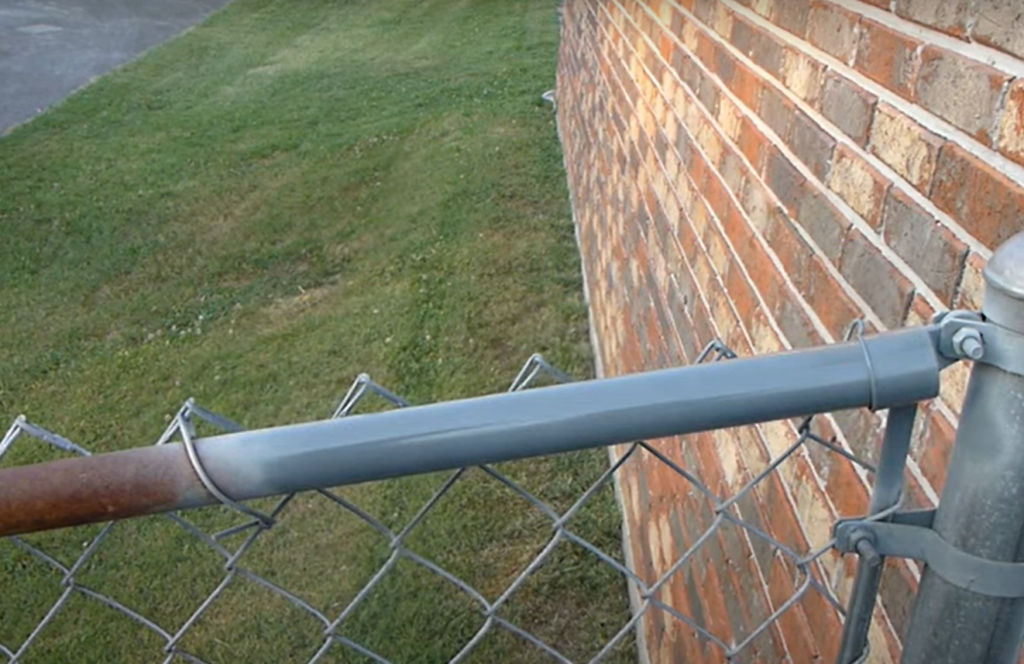
These specially formulated paints have been engineered to withstand harsh weather conditions, including extreme temperatures, moisture, and UV exposure. By resisting fading caused by the sun’s rays, they maintain their vibrant color for an extended period of time. Additionally, these paints provide excellent adhesion to metal surfaces, ensuring that the paint adheres firmly and remains intact even in challenging outdoor environments.
One of the key advantages of using paints designed for chain link fences is their ability to protect against rust, which is a common issue faced by these types of fences. These paints contain rust inhibitors that create a protective barrier, preventing rust from forming and spreading. By applying a high-quality paint with rust-resistant properties, you can prolong the lifespan of your chain link fence and maintain its visual appeal.
When it comes to choosing the type of paint, acrylic and enamel paints are often recommended for their exceptional durability and finish. These paints offer long-lasting protection and are resistant to peeling, cracking, and chipping.
These options not only provide excellent coverage and durability but also offer resistance to rust, ensuring that your chain link fence remains in optimal condition for years to come. Moreover, they leave a smooth and professional-looking finish that enhances the overall appearance of your fence.Before applying the paint, it is essential to prepare the surface properly. This involves cleaning the chain link fence thoroughly to remove any dirt, debris, or loose paint. Additionally, it is highly recommended to apply a metal-specific primer before painting, as it enhances the paint adhesion and improves the longevity of the paint job.
Lastly, consider your color choice when painting your chain link fence. While black or dark green are popular options, as they tend to blend well with the outdoor surroundings, you can also explore other color options that complement your property’s style and aesthetic.
By taking the time to choose the right paint and following proper painting techniques, you can ensure that your chain link fence not only provides security but also adds beauty and value to your property for many years to come.[2]
How to Paint a Chain Link Fence
Now that you’ve properly prepared the fence and the surrounding area, and you have all your tools and materials ready, it’s time to start painting your chain link fence. Follow these steps to paint your fence and achieve a professional, durable finish:
- Apply Primer: Start by applying the metal-specific primer using either a paint sprayer, a long-nap roller, or a brush suitable for rough surfaces. The primer should be applied in a thin, even layer all over the fence, ensuring to cover all areas, including the edges and corners. This step is crucial as it helps improve paint adhesion and prevents rust, ensuring the longevity of your fence.
- Let it Dry: Allow the primer to dry completely before proceeding to the next step. The drying time can vary depending on the brand and type of primer, so refer to the manufacturer’s instructions. Patience is key here, as ensuring proper drying time will contribute to a smooth and flawless paint application.
- Apply the Paint: Once the primer is dry, begin applying the paint. Similar to the primer, apply the paint in a thin, even layer using the paint sprayer, roller, or brush. Be sure to cover all areas of the fence for a uniform appearance. Consider using a paint specifically formulated for outdoor applications to ensure long-lasting color and durability.
- Second Coat: Depending on the coverage and desired finish, you may need to apply a second coat of paint. Allow the first coat to dry completely before applying the second coat. This additional layer of paint will further enhance the appearance and protection of your fence, providing an extra level of durability against the elements.
- Clean Up: After the final coat is dry, carefully remove all painter’s tape, drop cloths, and plastic sheets. Take the time to clean your tools properly, ensuring they are ready for future projects. Dispose of any unused paint responsibly according to local regulations.
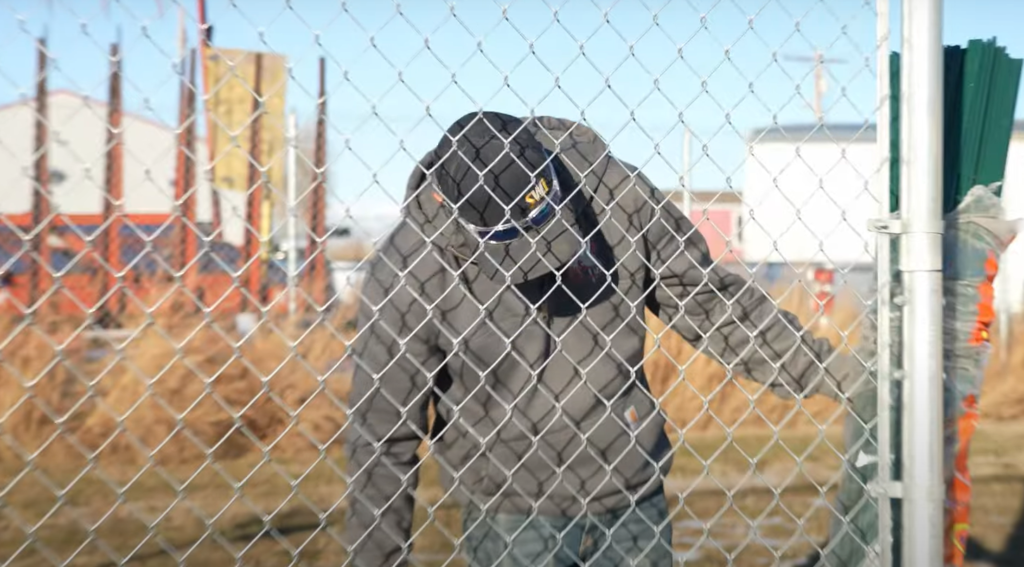
Remember, painting a chain link fence can be a time-consuming process, especially if the fence is large. Take your time and don’t rush the process. By following these detailed steps with patience and careful preparation, you’ll achieve a professional, durable finish that enhances the look and longevity of your chain link fence.[3]
Clean Up and Maintenance of Your Painted Chain Link Fence
To maintain the pristine look and long-lasting durability of your newly painted chain link fence, it is crucial to establish a regular clean-up routine and follow proper maintenance practices. Begin by gently hosing down the fence with water to effectively eliminate any accumulated dust, dirt, or unsightly bird droppings. It is important to avoid the use of harsh cleaning agents, as they may inadvertently damage the paint finish, compromising the overall appearance of your fence.
For more stubborn stains that may have found their way onto the surface of your fence, consider utilizing a soft brush and a mild soapy water solution. Gently scrub the affected areas, ensuring thorough coverage, and be sure to rinse the fence meticulously afterward to remove any residual soap residue.
In addition to regular cleaning, it is imperative to periodically inspect the fence for any signs of rust or chipping paint. Should you happen to come across any areas where the paint has chipped, it is recommended to lightly sand the affected region with fine-grit sandpaper. By doing so, you create a smooth surface for optimal paint adhesion. Before applying a fresh coat of paint, be sure to apply a layer of primer and allow it to dry completely. This essential step not only prevents the spread of rust but also ensures a seamless and long-lasting finish that will keep your fence looking fresh and well-maintained.
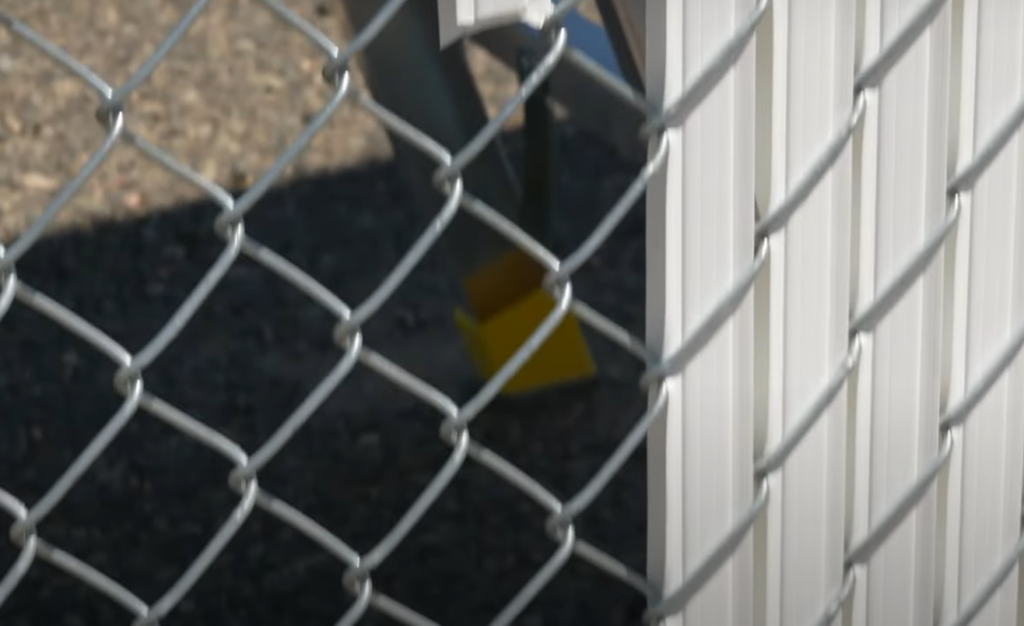
It is important to bear in mind that maintaining your chain link fence extends beyond its aesthetic appeal. By dedicating a little time and effort to routine maintenance, you can significantly enhance its longevity and durability. Your painted chain link fence serves as a testament to your attention to detail and commitment to preserving its pristine beauty.[3]
FAQ
Can you paint an old chain link fence?
Yes, you can paint an old chain link fence to improve its appearance and extend its lifespan. Before painting, clean the fence thoroughly, removing any rust. Use a wire brush to scrub off loose rust or paint, then wash with Trisodium Phosphate (TSP) to remove dirt, grease, and particles. Rinse and let it dry completely. Apply a rust-inhibiting, metal-specific primer, then your chosen outdoor, metal-friendly paint. Preparation is crucial, so take your time and apply paint in thin, even layers, allowing each layer to dry before applying the next. This will revitalize your fence and protect it from future damage.
How do you paint a chain link fence easily?
Painting a chain link fence may seem daunting due to its intricate design and texture. However, there are ways to simplify the process:
- Choose a Paint Sprayer: Opting for a paint sprayer instead of a brush or roller can make it quicker and easier. It can easily reach all parts of the fence, ensuring even coverage. Just remember to protect nearby areas from overspray.
- Proper Preparation: Cleaning and priming the fence well can make the painting process smoother. This prevents the need for multiple coats of paint.
- Quality Paint: Use high-quality paint designed for outdoor metals to achieve better coverage and durability. This reduces the need for future touch-ups or repainting.
- Work in Sections: Break down the work into manageable sections. This makes it easier to focus on even coverage and allows for breaks as needed.
- Get a Helper: If possible, have someone assist you. One person can apply the paint while the other checks for missed spots or uneven coverage.
Remember to protect yourself with appropriate safety gear, including gloves, goggles, and a mask, especially when using a paint sprayer. With these steps, you can easily and efficiently paint your chain link fence with less hassle and great results.
How can I make my old chain link fence look better?
Enhancing the appearance of an old chain link fence goes beyond painting. Here are some suggestions:
- Vinyl Coating: Apply colorful vinyl or PVC coatings for improved aesthetics, longevity, and resistance against rust and UV rays.
- Fence Slats: Add privacy and visual interest with a variety of materials, colors, and designs.
- Climbing Plants: Use vines like ivy, morning glory, or clematis to create a lush and vibrant look.
- Hang Flower Pots: Add color and charm by hanging flower pots along the fence, allowing for seasonal changes.
- Solar Lights: Illuminate your garden or yard with solar lights attached to the top of the fence.
- Mural: Consider painting a mural on your fence for a beautiful backdrop and conversation starter.
- Decorative Panels: Install lattice or bamboo rolls for a polished and stylish look.

These improvements enhance the visual appeal, privacy, and functionality of your chain link fence.
Can you paint a galvanized steel chain link fence?
Yes, you can paint a galvanized steel chain link fence. Galvanized steel is coated with zinc to prevent rust, creating a rough surface for paint adhesion. Before painting, clean the fence thoroughly with a TSP and warm water solution. Rinse and let it dry completely.
Apply a rust-inhibiting, metal-specific primer to bond with the galvanized surface and prevent corrosion. Use a primer designed for galvanized metal.
Once the primer is dry, apply exterior paint suitable for metal surfaces. Apply thin, even layers, allowing each layer to dry fully. This ensures a smooth, durable finish that enhances the fence’s look and protects it. Preparation, choosing the right products, and taking your time are key to success in any painting project.
What is the best paint for a metal chain link fence?
Choosing the right paint for a metal chain link fence is crucial for a durable and appealing result. Opt for outdoor, metal-specific paint like Rust-Oleum Protective Enamel or Krylon Rust Protector Enamel. For paint sprayers, consider Rust-Oleum Stops Rust Chain Link Fence Paint. Preparation is key, so clean and prime your fence properly for optimal results.
What paint will stick to galvanized metal?
When painting galvanized metal like a chain link fence, it’s important to choose a paint that adheres well to the zinc coating. Acrylic-based paints, like Rust-Oleum 7798830 Stops Rust Spray Paint, form a strong bond with the surface, providing durable coverage. For oil-based paints, use a primer for effective adhesion. Rust-Oleum Protective Enamel Paint is a reliable choice. For a metal-specific solution, try Krylon K08970000 SUPERMAXX All-In-One Spray Paint. Proper surface preparation is crucial for a smooth, long-lasting finish.
Useful Video: How to make a Chain Link Fence look good as New
Conclusion
Painting your chain link fence can greatly improve its appearance and lifespan while enhancing your outdoor space. The key to a successful paint job lies in choosing the right paint and properly preparing the fence surface. For galvanized metal surfaces, consider using Rust-Oleum Protective Enamel Paint, Krylon Rust Protector Enamel, or Rust-Oleum 7798830 Stops Rust Spray Paint. These paints adhere well to metal and provide durable, weather-resistant coverage. Remember to thoroughly clean and prime the surface before painting for optimal and long-lasting results.
References:
- https://www.familyhandyman.com/article/how-to-paint-a-chain-link-fence/
- https://chainlinkfittings.com/store/resources/resources-hub/what-is-the-best-way-to-paint-a-chain-link-fence.html
- https://www.weekand.com/home-garden/article/paint-chainlink-fence-18048094.php










Leave a Review